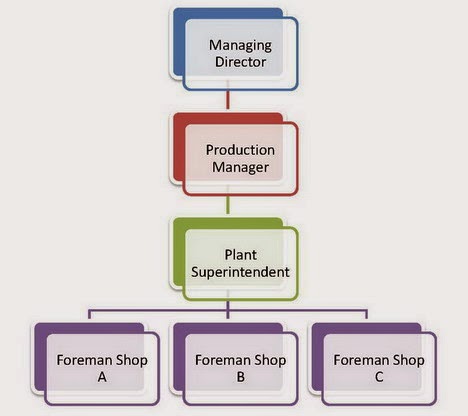Conflict ManagementConflict is the result of behavioral interaction of people who works within the organization. It can be also defined as the disagreement through which the parties involved perceive a threat to their needs, interests or concerns. It us the interactive process manifested in compatibility, disagreement or dissonance within or between social entities. The chance of raising conflict will be high when there is involvement of more people because they have different attitudes, values, skills and goals.Confrontation, strikes, destruction, obstruction and agitation are the symptoms of conflict.
https://bizmgnt.blogspot.com/According to R.W Griffin-"Conflict is a disagreement among two or more individual groups or organization".
According to Wall & Callister,"process in which one party perceives that its interests are being opposed or negatively affected by another party".

Conflict is taken as destructive, harmful and unnecessary for organization. This approach always fair from conflict and considered it as sign of negative performance. Manager always wants to take precaution and try to stop it at any cost. They think that conflict disturb and hamper the whole organizational performance and existing system. The modern approach advocates that the conflict is natural process for an organization. Conflict can be valuable to groups and organization. It has been shown to increase group outcomes when managed properly. It has positive and negative role to influence organizational performance. It needs to accept and resolve. Adequate level of conflict is essential for organizational effectiveness and changes. It there is no any level of conflict in an organization, it is very difficult to adopt changing environment and always become static and non dynamic. In the other hand if there is high level of conflict exists in an organization that will create another problem. Optimal level of conflict is good and beneficial for organizational performance.
Conflict management involves implementing plan, policies and procedure to minimize the negative aspects of conflict. The aim of conflict management is to enhance learning and group effectiveness or performance in organizational setting. It is not concerned with eliminating all conflict or avoiding conflict.
Level of Conflict
1
.Conflict within the individuals: Conflict within the individual arise from person's own psychology. The causes of such conflict may be frustration and role conflict. It is faced by individual. It employee perceives that organization does don't recognized his expectation and he wants to search new opportunity than intrapersonal conflict may raise.
2.Interpersonal conflict: It arise from disagreement between two or more people on certain issues and subject matter. It is introduce from internal competition of power, position, wealth and capacity. These conflicts are often the results of personality conflict. People having different characteristics and attitude are leading to increasing conflict. Positive ego and construction view among the employee always be beneficial for an organization, but increasing the interpersonal conflict in organization frequently than it become harmful.
3.Intergroup conflict: It refers the conflict between two or more group of an organization. An organization may have different formal and informal group to conduct their regular activities. They also have different goal and objectives. If the roles are conflicting and not supportive to each other than conflict may arise. Different functional group within the organizational may come in to conflict due to the different specific target and objectives.
4.Inter organizational conflict: If conflict arise between two or more organization it is known as inter-organizational conflict. It occurs from disagreements and competition between two of more organization. For eg. conflict between the two competitors on the topics of misusing one brand or copyright from another.
Conflict Management Technique 1.Avoidance technique
1.Avoidance technique: This approach is viewed as postponing an issue for later or withdrawing from the situation altogether. In this technique organization does not want to face current conflict. There are several techniques to avoid conflict in organization. Main of them are:
a.Ignoring: In this technique manager does not give emphasis on conflict. If stakeholders are low, issues are weak and if there will be chance to resolve that conflict automatically. This method is very applicable.
b.Imposing: To stop conflict with possible solution, the management gives pressure. They are asked to maintain favorable and good environment within organization and stop their demand. It is regarded as a temporary solution because the problem and conflict continue to reoccur over and over again.
2.Diffusion technique: Organization initiates to cool down conflicting parties. In this techniques organization takes time to decide conflicting issues. If conflict is arise from previous decision that will not be implemented for a while. The issue will be resolved after certain period with making consent of both parties.
3
.Conflict containment technique: It is the important and permanent technique of conflict management. Management provides higher attention to resolve the conflict, with logical and appropriate ground. Following are the alternatives action available to prevent the adverse effect of conflict in an organization.
a
.Bargaining: One of the most widely used and effective mediation techniques is to engage in a discussion over the issue across the table, with the manager as mediator. Conflicting group can offer the demand and it will be negotiable with management.
b.Liaison group: Some business organizations prefer to hire outside professionals or agencies to act as a third party mediator or arbiter on behalf of the company. The advantage of this technique is it is likely to ensure the most objective and fair resolution of the conflict, without any fear or favor to either side.
4.Conflict confrontation technique: Whatever the outcomes may occur, the organization take decision to face conflict. It is also known as competing, controlling or dominating style. Forcing occurs when one party goes all out to win its position while ignoring the needs and concerns of the other parties.
If your find this article helpful then please let me know through comment and if you want any other information related to this topic then please comment. And also you can visit my https://bizmgnt.blogspot.com/to know more about related topic.







Comments
Post a Comment